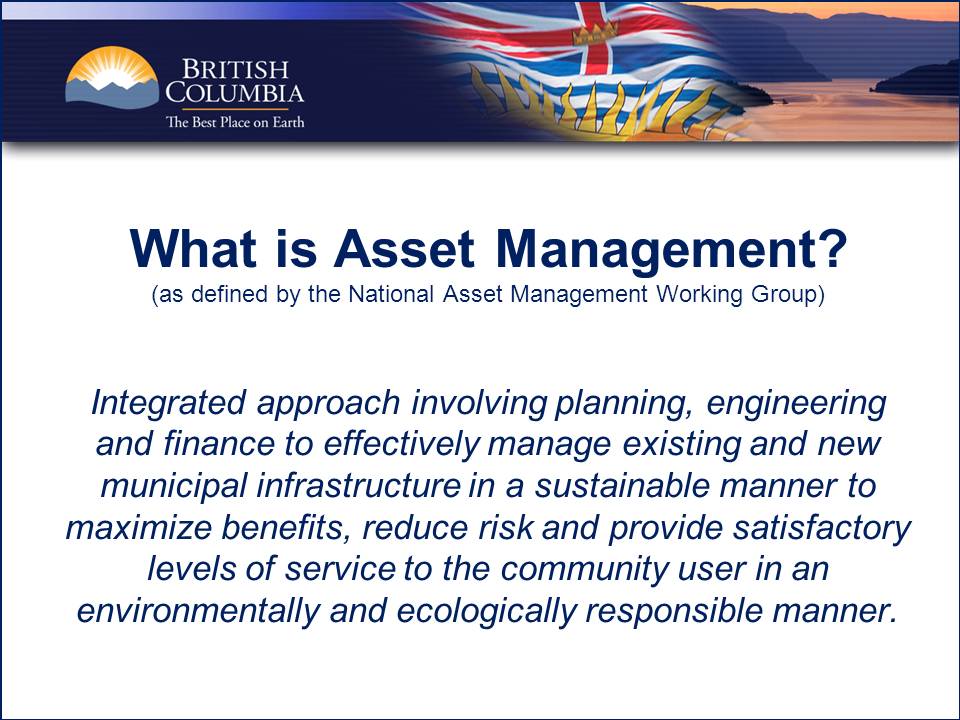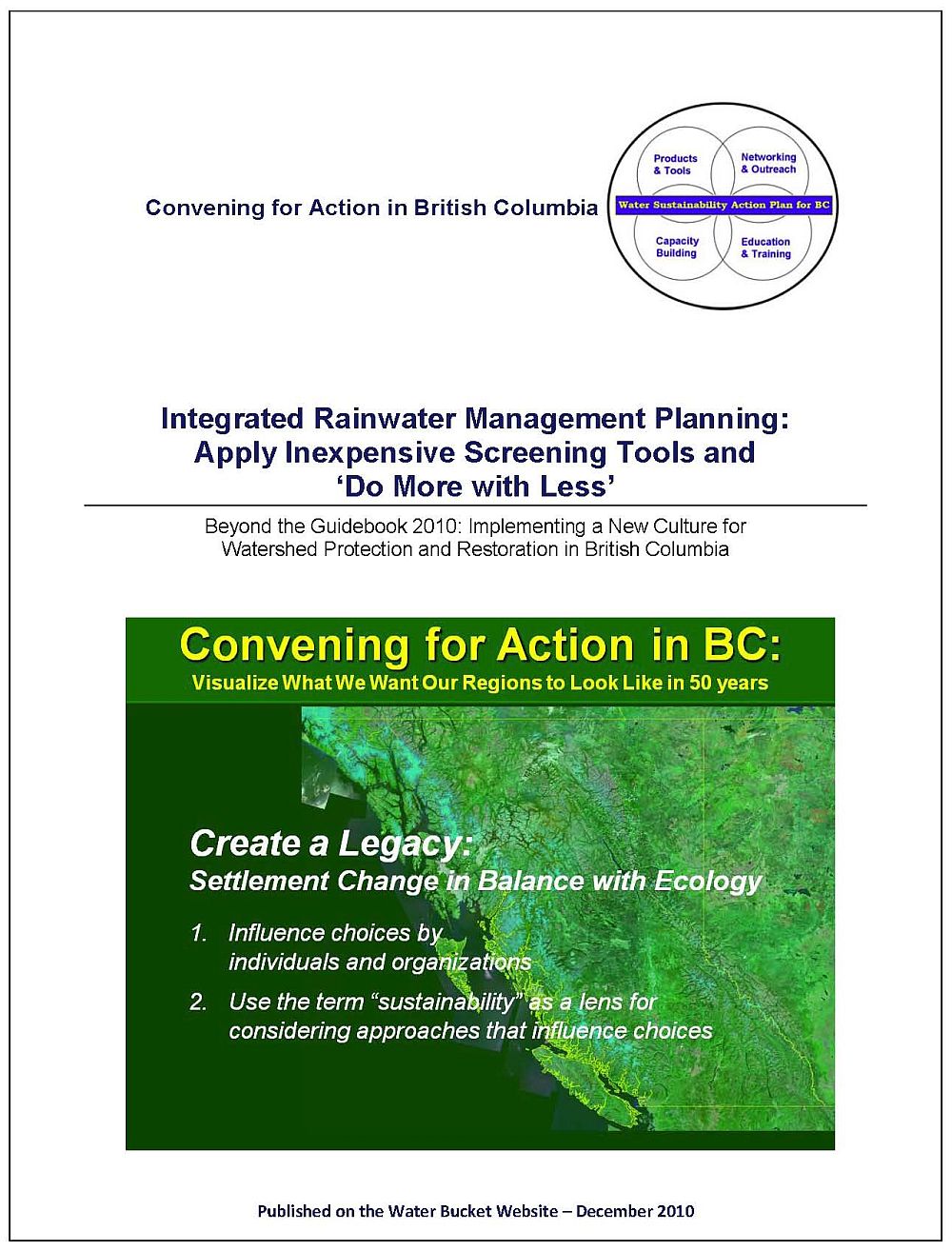Integrated Rainwater Management: Move to a Levels-of-Service Approach to Sustainable Service Delivery
Note to Readers:
During the November-December 2010 period, the Water Sustainability Action Plan for British Columbia released a 5-part series that is designed to inform local governments and others about a ‘course correction’ for Integrated Stormwater Management Plans (ISMPs). The series describes:
- what ISMPs are;
- how local governments can do more with less; and
- how local governments can ensure ISMPs are outcome-oriented.
The fourth in the series introduced the ‘infrastructure deficit’ as a driver for the ISMP Course Correction. It connected the dots to Asset Management as a way to re-focus the ISMP process on what really matters.

Sustainable Service Delivery Context for ‘ISMP Course Correction’
The first three installments in the series established the context for embracing a ‘regional team approach’ and making the change to IRMP (Integrated Rainwater Management Plan) from ISMP. In the fourth instalment, the spotlight shifted to Asset Management as a pathway to re-focus local governments on stream health and desired watershed outcomes.
The term Sustainable Service Delivery describes a new way of thinking about infrastructure needs and how to pay for those needs over time. The link between asset management and the protection of a community’s natural resources is emerging as an important piece in Sustainable Service Delivery.
Provincial Policy Framework
The definition of Asset Management is holistic (see above) and provides financial context for the ‘ISMP course correction’. The definition emphasizes integration and connects the dots to ecology. Asset management is a provincial priority; and the Province is both enabling and supporting the efforts of the Local Government Asset Management Working Group and Asset Management BC.
Living Water Smart, British Columbia’s Water Plan provides an over-arching provincial policy framework that encompasses both the ‘ISMP course correction’ and asset management. Actions and targets in Living Water Smart encourage ‘green choices’ that will foster an holistic approach to infrastructure asset management.
Level-of-Service Approach
 “Asset management usually commences after something is built. The challenge is to think about what asset management entails BEFORE the asset is built. This paradigm-shift starts with land use planning and determining what services can be provided sustainably, both fiscally and ecologically,” states Stan Westby, Chair of the Local Government Asset Management Working Group and Chief Administrative Officer with the District of Powell River.
“Asset management usually commences after something is built. The challenge is to think about what asset management entails BEFORE the asset is built. This paradigm-shift starts with land use planning and determining what services can be provided sustainably, both fiscally and ecologically,” states Stan Westby, Chair of the Local Government Asset Management Working Group and Chief Administrative Officer with the District of Powell River.
“Everyone needs to be thinking in terms of life-cycle costs, especially future recapitalization of the investment. This is not normally considered in traditional infrastructure decision-making.”
Avoid Building an Unfunded Liability
“While developers and new home purchasers pay the initial capital cost of municipal infrastructure under either greenfield or redevelopment scenarios, it is local government that assumes responsibility for the long-term cost associated with operation, maintenance and replacement of infrastructure assets.”
“A rule-of-thumb is that the initial capital cost is about 20% of the life-cycle cost. The other 80% represents an unfunded liability. This underscores the vital necessity of making a sound front-end infrastructure investment decision. Don’t build a liability!”
Establish a Sustainable Level
“When you think about it some more, you realize we really should be talking about level-of-service. This term is the integrator for everything,” continues Glen Brown, Executive Director with the Local Government Infrastructure and Finance Division.
“What level does a community wish to provide, and what level can it afford. Everyone will have to make level-of-service choices. Thus, a guiding principle for an IRMP could be framed this way: Establish the level-of-service that is sustainable to protect watershed health, and then work backwards to determine how to achieve that level of protection.”
wish to provide, and what level can it afford. Everyone will have to make level-of-service choices. Thus, a guiding principle for an IRMP could be framed this way: Establish the level-of-service that is sustainable to protect watershed health, and then work backwards to determine how to achieve that level of protection.”
The concept of Levels-of-Protection as applied to watershed health is a sub-set of Level-of-Service.
To Learn More:
To read the complete story, click on Story #4 in the ISMP Course Correction Series: Move to a Levels-of-Protection Approach to Sustainable Service Delivery to download a PDF copy.
For more information on the 5-part series, click on Water Bucket publishes excerpts from “Beyond the Guidebook 2010” about why and how to re-focus ISMPs on outcomes — Outcome-oriented planning is a problem-solving PROCESS. It is not a procedure. It is not a matter of applying a regulation or a checklist. Participants have to be committed to the outcome.


